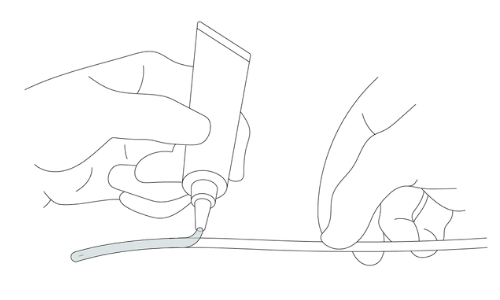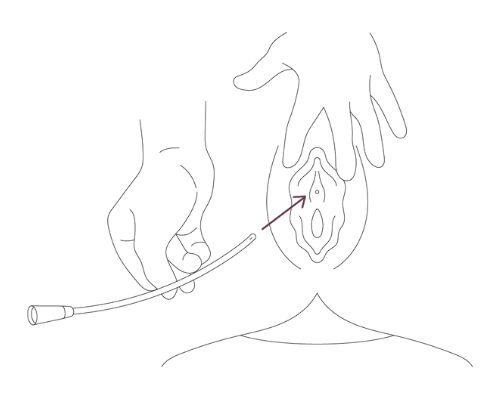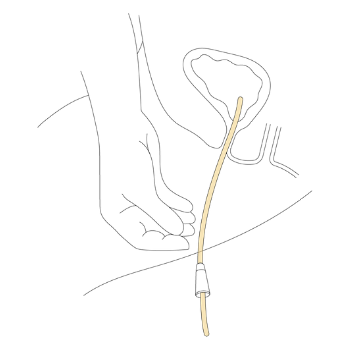Female Catheters
When it comes to female catheters, there is no universal type, size, or length that will work for every woman. It's important that you speak with your healthcare provider about what type of catheter will work best for your specific needs and condition.
Aeroflow has products specifically for the female anatomy and the support to keep you worry-free whether you are new to catheterization or are a current catheter user.
Check Your Eligibility
In 2 easy steps!
Discover the catheter supplies covered by your insurance.
Conditions
Urinary catheters are usually prescribed when the bladder is not able not to drain properly. Common conditions in women that may require catheterization include:
- Urinary incontinence (leaking urine or the inability to control the bladder).
- Urinary retention (being unable to empty your bladder).
- After urinary incontinence or prolapse surgery.
- Hysterectomy
- Spinal cord or bladder injury.
Self-Catheterization
Self-catheterization can be intimidating to a new catheter user, but we are here to help. Follow this guide for a successful and stress-free process.
Step 1: Gather Your Supplies. The first step in self-catheterization is to ensure that you have all of the supplies you will need. Depending on what type of catheter you have, this could include the catheter you intend to use, moist towelettes or soap and sterile water, a dry paper towel, lubricating jelly, and a toilet or drainage bag (plastic bag). If you have a catheter kit, all of the supplies you will need should be included for you.
Step 2: Wash Your Hands. In order to prevent catheter-associated UTIs, it is very important to make sure your hands are clean by washing them with an antiseptic, soap and water, or a moist towelette before beginning self-catheterization.
Step 3: Stop and Look at Your Catheter. Before you use your catheter, make sure that none of the packaging has been previously opened or damaged.


Step 4: Catheter Insertion. Put yourself in a comfortable position with your thighs spread apart. Some women prefer to sit on the toilet or a chair across from the toilet. Clean yourself by separating the labia (the lips or folds at the opening of your vagina) and wipe with a moist towelette. If you have an uncoated catheter, apply the lubricating jelly from the catheter’s tip to about two to four inches down the tube.
Use a mirror or your index finger to find the urethra (urethral opening) and slowly insert the end of the catheter into the urethra until urine flow begins to flow freely. If you encounter any resistance, take a few deep breaths and try again. Insertion may be slightly uncomfortable but should never be painful.


Step 5: Make Sure Your Bladder is Empty. When urine stops flowing, slowly begin to pull the catheter out. Rotate the catheter as you remove it and stop each time more urine begins to flow again. Pausing will help make sure your bladder drains completely.
Step 6: Clean Up. Once you have finished, dispose of your used catheter and supplies in a proper waste bin and thoroughly wash your hands with soap and water or a moist towelette.


Contact Your Doctor
Please reach out to your healthcare provider and seek medical advice if you experience any of the following symptoms:
- Cloudy or bloody urine.
- Leakage around the catheter.
- Pressure, pain, or discomfort in the pelvic area while inserting the catheter.
- Pressure, pain, or discomfort in the lower back.
- Fever or chills.
- Nausea or vomiting.
- Burning in the urinary tract.
Types of Catheters
-
Intermittent: A straight, uncoated catheter that requires lubrication to be applied to the catheter before it is inserted.
-
Compact: A catheter that is small and discreet.
-
Pre-lubricated: Also known as a coated catheter, this catheter comes pre-lubricated to help prevent any bacteria from entering the urinary tract and causing a urinary tract infection (UTI).
-
Closed System: A pre-lubricated intermittent catheter that drains into a collection bag.
-
Indwelling/Foley Catheter: A closed sterile system catheter with a retention balloon inserted to keep the catheter in the bladder.
French Sizes & Catheter Lengths
French size refers to the external diameter of the catheter tube. The higher the number, the greater the diameter. Your doctor will help select the right size, but if you ever feel any pain during insertion or experience leakage around your catheter, be sure to let your healthcare professional know. Catheters that are too large may cause friction or pain when inserted, catheters that are too small may cause urine output to be slow or leak while inserted. Most intermittent catheters with drainage funnels will use a color-coding system to indicate the French size. This way, you don't have to worry about using the wrong size catheter by accident.
Catheter lengths vary, but most female catheters are around six inches long.
Need Additional Help?
If you have questions about our catheter products or the catheterization process, please reach out to us at 844-276-5588, or email us at info@aeroflowurology.com, and one of our Continence Care Specialists will be able to assist you and provide discreet answers to your questions.
For video resources, check out our YouTube channel for more step-by-step instructions on how to safely insert and remove catheters.
